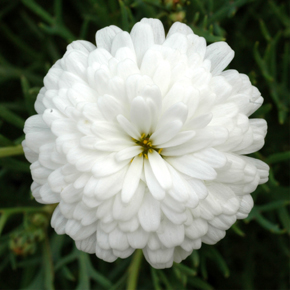Array
(
[0] => Array
(
[id] => 10
[is_published] => 1
[websiteID] => 5
[url] => /landscaping/planning-garden-design.php
[page_status] => Published
[number_of_ads] => 2
[can_use_editor] => 1
[last_modified_date] => 2014-01-13 00:00:00
[last_modified_by] => Angela
[checked_for_duplicate_content] =>
[title] => Planning your garden
[heading] => Planning your garden
[meta_description] => Learn how to design a garden using a step-by-step approach.
[article_category_1] => Landscaping
[article_category_2] =>
[article_category_3] =>
[article_category_4] =>
[article_category_5] =>
[business_category_1] => Landscaper
[business_category_2] => Nursery
[business_category_3] => Garden Designer
[business_category_4] => Landscape Architect
[business_category_5] =>
[number_of_google_mrecs] => 1
[show_google_ad_bottom_of_page] => 1
[show_get_quotes_top_of_page] => 1
[show_get_quotes_rhs_of_page] => 1
[show_directory_search_widget] => 1
[show_trending_content_widget] => 1
[show_facebook_widget] => 1
[show_further_reading_section] => 1
[show_sponsors_section] => 1
[show_top_article_ad] => 1
)
[1] => Array
(
[id] => 448
[is_published] => 1
[websiteID] => 5
[url] => /diy/diy-paving.php
[page_status] => Published
[number_of_ads] => 12
[can_use_editor] => 1
[last_modified_date] => 2013-09-15 00:00:00
[last_modified_by] => Alan
[checked_for_duplicate_content] =>
[title] => DIY Paving in 4 easy steps
[heading] => DIY Paving in 4 easy steps
[meta_description] => Paving is not as hard as you may think. Here are four easy steps to creating a paved courtyard.
[article_category_1] => DIY
[article_category_2] =>
[article_category_3] =>
[article_category_4] =>
[article_category_5] =>
[business_category_1] => Landscaper
[business_category_2] =>
[business_category_3] =>
[business_category_4] =>
[business_category_5] =>
[number_of_google_mrecs] =>
[show_google_ad_bottom_of_page] =>
[show_get_quotes_top_of_page] =>
[show_get_quotes_rhs_of_page] =>
[show_directory_search_widget] =>
[show_trending_content_widget] =>
[show_facebook_widget] =>
[show_further_reading_section] => 1
[show_sponsors_section] => 0
[show_top_article_ad] => 1
)
[2] => Array
(
[id] => 522
[is_published] => 1
[websiteID] => 5
[url] => /gardening/dealing-with-possums-in-the-garden.php
[page_status] => Published
[number_of_ads] => 3
[can_use_editor] => 1
[last_modified_date] => 2013-09-16 00:00:00
[last_modified_by] => Alan
[checked_for_duplicate_content] =>
[title] => Dealing with possums in the garden
[heading] => Dealing with possums in the garden
[meta_description] =>
[article_category_1] => Gardening
[article_category_2] =>
[article_category_3] =>
[article_category_4] =>
[article_category_5] =>
[business_category_1] => Landscaper
[business_category_2] => Garden Maintenance
[business_category_3] => Garden Supplies
[business_category_4] => Garden Designer
[business_category_5] => Garden Tools
[number_of_google_mrecs] =>
[show_google_ad_bottom_of_page] =>
[show_get_quotes_top_of_page] =>
[show_get_quotes_rhs_of_page] =>
[show_directory_search_widget] =>
[show_trending_content_widget] =>
[show_facebook_widget] =>
[show_further_reading_section] => 1
[show_sponsors_section] => 0
[show_top_article_ad] => 1
)
[3] => Array
(
[id] => 9
[is_published] => 1
[websiteID] => 5
[url] => /landscaping/plants-for-your-garden.php
[page_status] => Published
[number_of_ads] => 2
[can_use_editor] => 1
[last_modified_date] => 2013-09-10 00:00:00
[last_modified_by] => Alan
[checked_for_duplicate_content] =>
[title] => Selecting plants for your garden
[heading] => Selecting plants for your garden
[meta_description] => This article describes how you can best select plants for your garden.
[article_category_1] => Landscaping
[article_category_2] =>
[article_category_3] =>
[article_category_4] =>
[article_category_5] =>
[business_category_1] => Landscaper
[business_category_2] => Nursery
[business_category_3] => Garden Designer
[business_category_4] => Landscape Architect
[business_category_5] =>
[number_of_google_mrecs] => 0
[show_google_ad_bottom_of_page] => 1
[show_get_quotes_top_of_page] => 1
[show_get_quotes_rhs_of_page] => 1
[show_directory_search_widget] => 1
[show_trending_content_widget] => 0
[show_facebook_widget] => 0
[show_further_reading_section] => 1
[show_sponsors_section] => 0
[show_top_article_ad] => 1
)
)
Plant description
Argyranthemum Supreme White bears fully double, white daisy flowers on a dense growing plant.
Marguerite daisies are a compact sub-shrub that originate from the Canary Islands. They have a compact growth habit, are free flowering, and are troubled by few pests and diseases. They are good for garden beds and borders, and also make excellent container plants.
Marguerite daisies are rewarding garden plants. They grow best in a sunny position in moist, well drained soil. The main flowering is in spring and autumn, with some flowers at other times. A light trim after each major flush will encourage new growth and more blooms, and an application of fertiliser at the same time is beneficial.
Additional plant information
Flowers
Flower colour: White
Flowering season: spring summer autumn winter
Scent
Marguerite daisies have a light fragrance
Plant size
Maximum height: 0.6 metres
Minimum height: not specified
Maximum width: 1 metres
Minimum width: not specified
Sunlight, frost & salt tolerance
This plant will tolerate full or partial sunlight.
Medium frost tolerance.
Plant is salt tolerant.
Fauna attracting?
Yes. Attracts: Butterflies.
Climate
This plant species will grow in the following climates: cool, temperate, subtropical, tropical.
Soil types & conditions
Loam: moist, well-drained.
Clay: moist, well-drained.
Sand: moist.
Soil pH: 5.0-7.0
Pests
Aphids
Miscellaneous information
Planting season: All.
Types of fertiliser: A good general purpose fertiliser, applied after each large flush of flowers..
Find a nursery
Search for another plant

